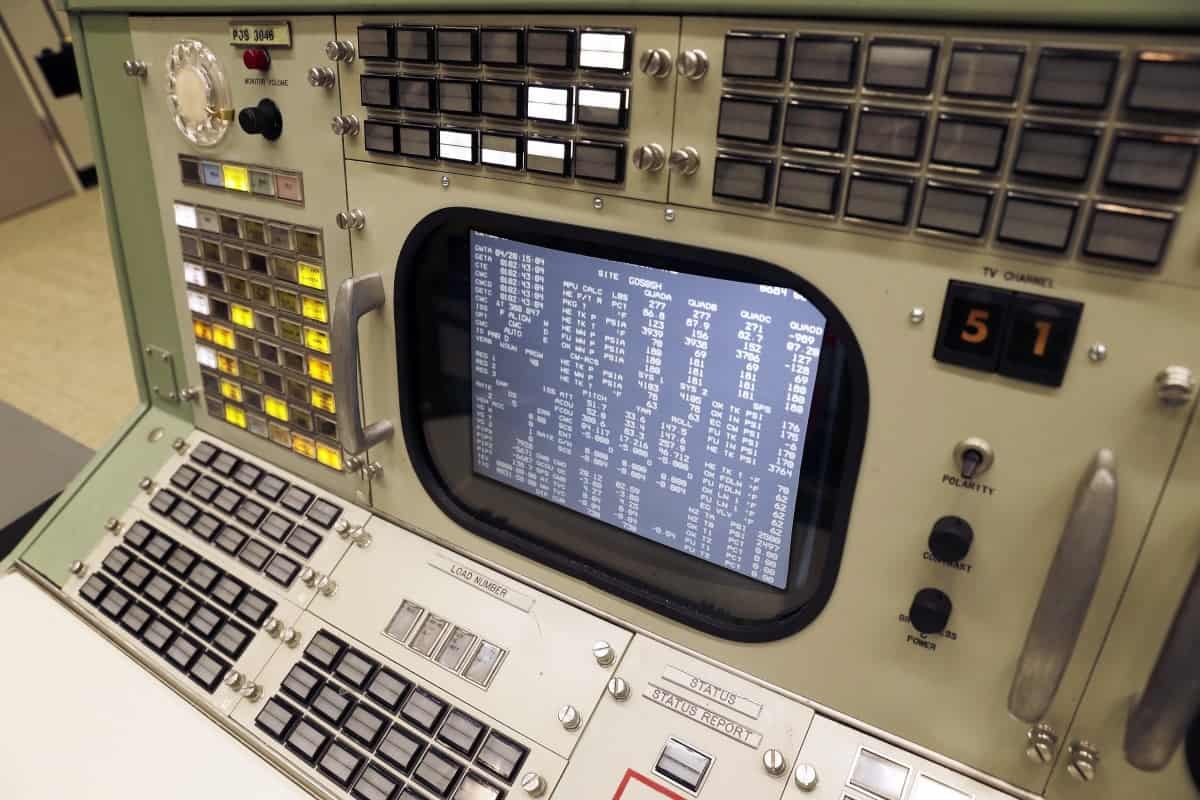
Nasa has held a grand reopening of its Mission Control room from the Apollo days after it was meticulously restored to the way it looked 50 years ago.
The site at Johnson Space Centre in Houston was last used for space shuttle flights in the 1990s, and has been recreated down to the carpeting, wallpaper, glass ashtrays and retro coffee cups.
The reopening caps years of work and millions in donations, and it opens to the public on Monday, weeks before the 50th anniversary of the Apollo 11 moon landing.
Gone is the haze of cigarette, cigar and pipe smoke, as well as the coffee, drinks and pizza stains, from 1969 when Neil Armstrong and Buzz Aldrin landed on the moon.
It was given the stamp of approval from retired flight director Gene Kranz, a man for whom failure — or even a minor oversight — was never an option.
But, seated at the console where he ruled over Apollo 11 and Apollo 13, he pointed out that a phone was missing, and the air vents used to be black from all the smoke, not sparkly clean like they are now.
“When I sit down here and I’m in the chair at the console … I hear these words, ‘Houston, Tranquillity Base here. The Eagle has landed’,” he said during a sneak preview.
The goal was “to capture the look and feel of July of 69”, said Nasa’s restoration project manager Jim Thornton.
“The place is designated a National Historic Landmark,” he said. “It’s not for the brick and mortar of the building, it’s for the amazing feats that happened inside of the building.”
Johnson’s historic preservation officer, Sandra Tetley, strove for accuracy. Her quest began in 2013, after the room had fallen into neglect. It was last used for space shuttle flights in the 1990s, then abandoned and opened to tourists.
The restoration effort finally got traction in 2017. The room was closed, and construction began. More than 5 million dollars (£4 million) was raised, most of it from donations.
Ms Tetley and her team interviewed flight controllers and directors now in their 70s and 80s. They pored through old pictures and brought in specialists in paint, wallpaper, carpeting, electricity and upholstery. Original swatches of carpet and wallpaper and an original ceiling tile turned up.
Intent on authenticity, they scoured eBay and vintage shops for ashtrays and cups and turned to 3D-laser printing to recreate lids for the back-of-the-seat ashtrays in the glassed-in visitors’ section overlooking the control room. Old binders for reams of paper were collected, seat cushions were handwoven, and ceiling tiles were hand stamped.
Carpeting was custom ordered with special tufting and extra yarn, then cut into 28in squares. The restoration team wanted a lived-in look for the carpet and chose a shade reflecting years of nicotine discolouring.
In a concession to the 21st century, modern LED lights and flat screens were installed to bring the consoles alive with images and flashing buttons, and big screens up front will show key footage from the Apollo 11 mission.